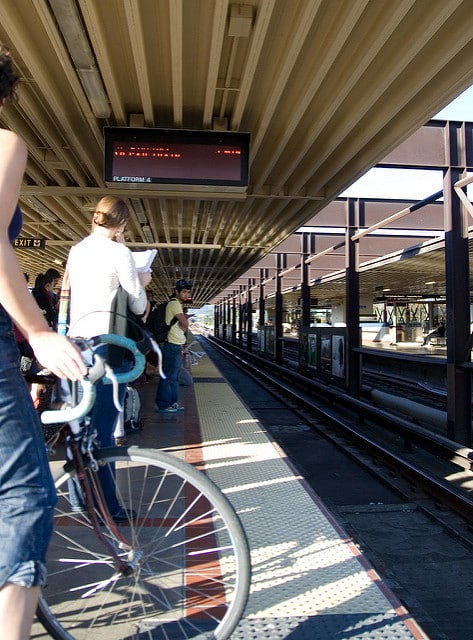On the heels of #metoo and watching my oldest grow up, I’ve been trying to figure out how to help my daughter to have the tools for growing up and becoming a woman in public. I want her to grow into a smart adult who can navigate the world and I’m trying to give her those opportunities, but I also want to protect her from the harassment she’ll inevitably encounter.

This past year we let her take the bus on her own for the first time. I was there at the bus stop where she got on and my husband was at the bus stop where she got off, but she did the ride on her own. She’s also walked to the store with her friends and run errands. She bikes to and from school on her own, or with her brother. I’ve looked for guides or listicles online for helping pre-teens be safe while they travel through the world on their own, but couldn’t find any. I received one suggestion from someone to read Protecting the Gift by Gavin de Becker and while somewhat helpful, still wasn’t quite what I was looking for. But taking ideas from there and my own experience, here’s a listicle for you.
Edited to add points 12 and up, from input from other people’s suggestions.
- Travel in groups when you can. A kid in a group is less likely to singled out for unwanted remarks or attention.
- On the bus, sit near the driver. I know it’s fun to sit in the back, but if you’re on your own, sit where more eyes can see you. If you are worried about missing your stop, let the driver know where you want to get off so if you forget to pull the “stop requested” cable, you’ll still get to where you need to be.
- Except for #2 above, don’t tell people where you are headed. Don’t accept offers for rides home. It is ok to ask for directions- you can ask a bus driver if their bus route goes where you are headed.
- If you need directions or assistance, statistically the best person to talk to is a woman.
- Know how to read a transit map and timetable. Where we live, the BART is the main commuter train and the map is posted in all the stations and in all the trains.
- If someone shouts at you to get your attention, you don’t have to give it to them. You don’t have to talk to anyone you don’t want to. You don’t have to sit next to anyone you don’t want to. You can get up and change seats and don’t worry about upsetting them. You can also say, “Don’t talk to me” directly. If they don’t respect that, get away, it is a bad sign.
- If someone touches you, be direct with, “Don’t touch me.” Find a bus driver, or a family, or a woman to help you report it.
- Know what bus line will get you home if you get off the train at the wrong station. We practice, “If you get off at the 12th St staton, which bus route will get you home?” “What if you get off at MacArthur?” When we are biking around I also ask, “What street are we on? Which bus route is closest to getting you home from here?” “If you weren’t on a bike, how would you get home?”
- “No” is a complete sentence.
- If a man shows you his penis, tell the bus driver. If you are on BART and the driver isn’t in the same car as you, shout loudly, “This man has his penis out!” and walk to another train car or find a family to be near. Men do this because they expect people around to be quiet. Don’t be quiet.
- Listen to your gut. If you feel like you need to get off a bus or get away from someone, do it. You don’t have to apologize.
- Be aware of your surroundings. Look up on public transit, look around you while walking. Don’t worry that you look paranoid to other people; you look aware.
- Don’t feel bad if you don’t respond “correctly.” It’s hard to do everything “right” all the time and what is “right” in one circumstance may not be “right” in another.
This isn’t the conversation I want to have with my daughter, but it is the conversation I need to have. This is not inclusive at all. If you have additions you’d like to make, please add them in the comments.
If you’re interested in the book, Protecting the Gift, it is highly recommended from so many people I know. It’s a hard read and there are descriptions of child abuse and other harm to children, so be kind to yourself when deciding to read this. You can get it here:
[amazonjs asin=”0440509009″ locale=”US” title=”Protecting the Gift: Keeping Children and Teenagers Safe (and Parents Sane)”]






5 Responses
Thanks for this list, TopHat. I particularly like how generally applicable the ones like #6 and #7 are. It’s sad that we live in a world where things like your list are needed, but since we do, I’m glad that you put it together. Stuff like this is so, so necessary.
As I was reading these excellent points, I couldn’t help but think these apply to grown women as well. Many of your suggestions require speaking up which is something women are typically taught to not do, but we need to do. I love your list and thank you for sharing such doable ways to protect our daughters and ourselves.
Thanks! As I was writing this, I was definitely reflecting on how I need to step up for myself more often.
3, 7, 8, 10 – all are very important for kids to know & practice (with themselves regularly) if they’re going to be on public transportation alone. I’m 55 and I still have to remind myself of these FACTS, as they weren’t drilled into me as a child. Your list reflects not only good common sense, but the fact that we are individuals with rights to autonomy & dignity.
Look at the Melinda Gates title piece in TIME magazine; isn’t it time for another women’s revolution? I’m taking back my power everyday. I’m mad as ever & NOT standing for ANYMORE ABUSE or harassment . Not in my presence. I hope we can all be brave together. Teach & model this strength & dignity to yourchildren.
These are great tips. I am going to share them with my pre-teen daughter.